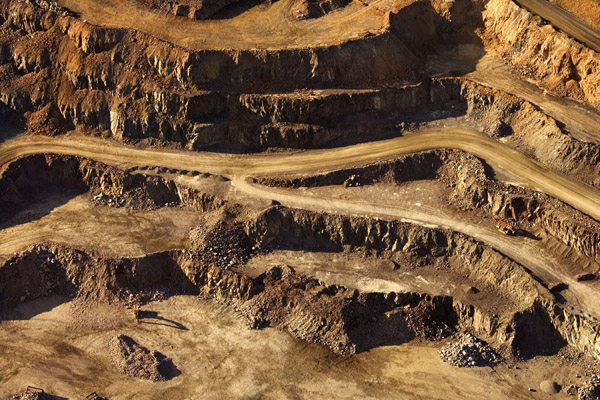The global ammonia market is expected to record a compound annual growth rate (CAGR) of over 5% during the forecast period of 2019-2024, a recent ResearchAndMarkets report says. Meanwhile, the worldwide ammonia capacity is expected to grow almost 25% over the next decade, from 253 million tpy in 2019 to 290 million tpy in 2030, according to GlobalData. The major factor driving the market is the growing demand in the agriculture industry but also its increasing usage for the production of explosives. Asia-Pacific dominated the market across the world, with the largest consumption from countries, such as China and India, and is further expected to remain the same in the future. Over half of the total projected 25% growth is expected to be accounted for by either announced or planned capacity in India, Russia and Iran, while Nigeria is projected to account for over 20% of the growth. A steady supply of inexpensive natural gas, as both feedstock and energy, is key to expansion.
As mentioned, the agriculture industry dominates the global ammonia market, and this is with an estimated market share of more than 80% in 2018. Ammonia is majorly used in fertilizers that are plant nutrients and are hence required for growth of crops. As for urea, it is a dry nitrogen material produced by reacting ammonia with carbon dioxide. Urea contains the highest percentage of nitrogen among the commonly used dry fertilizers and is rapidly replacing ammonium nitrate in recent years. And it is the continuing growth in agriculture production through the years, primarily owing to the growing population, increasing urbanization, and rising disposable income of individuals, that has been driving the usage of the fertilizers. Demand for fertilizers is rising modestly in the global market owing to ample inventories and low prices for most crops; improving economic prospects in developed countries, Russia, Brazil, and Sub-Saharan Africa; and growing political uncertainty in several large fertilizer-consuming markets. Overall, the rising fertilizer market is expected to drive the ammonia consumption through the forecast period.
The global nitrogen fertilizers market is expected to grow at CAGR of 7% and reach US$70.62 billion by 2023 up from US$ 54.61 billion in 2019. The nitrogen fertilizers market has been geographically segmented into North America, Western Europe, Eastern Europe, South America, Middle East and Africa, and the Asia-Pacific region, with the latter accounting for around 43% of the whole market. Nitrogen is one of the fertilizers majorly affecting the pH balance in the soil, whether its alkaline or acidic based on the type of the nitrogen fertilizer that has been used. Also urea market is witnessing rapid growth in fertilizers market as it controls air pollution by catalytic reaction. Global urea capacity is forecast to increase by a net of 17 metric tons by volume for each year and the total production is estimated as 226 metric tones by 2021, according to International Fertilizers Association (IFA). Thus, the expected increase in production of urea promotes the sales of nitrogen fertilizers market.
In Nigeria, the industry produces over 1.5 trillion ft3/yr of gas, but approximately 400 billion ft3 is flared off. Dangote Group’s new fertilizer plant and ammonia complex, located in Nigeria’s biggest city of Lagos, will be ready to start production later this year. Owned by Aliko Dangote, Nigeria’s billionaire business magnate and Africa’s richest man, the US$2 billion facility in the Lekki district of Nigeria’s commercial hub has a projected capacity of 1.5 million short t of ammonia and 3 million short t of urea annually, making it the world’s biggest. Also in Nigeria, Indorama Eleme Fertilizer and Chemicals Limited (IEFCL) manufactures 1.5 million tpy of nitrogen products (2300 MTPD Ammonia & 4000 MTPD Urea Fertilizer) at its ‘Train 1’ complex. The Singapore-based company is now also undertaking a US$3.3 billion development of ‘Train 2’ fertilizer project to double the capacity (from 1.5 million tpy to 3 million tpy) of urea production adjacent to the ‘Train 1’ within the existing manufacturing Indorama complex at Eleme.
OCP Group, the Moroccan phosphate giant, announced in mid-2020 that its US$2.5 billion Greenfield ammonia plant in Nigeria with the capacity of 750 000 tpy of ammonia and 1 million tpy of mixed fertilizers would be operational by 2024. With its 17 domestic plants, Egypt is another leading manufacturer and important consumer (mainly along the fertile Nile valley and delta) of nitrogen that has recently announced a discovery of offshore gas, including the 30 trillion ft3 Zohr field. Fabrication of modules for NCIC’s new ammonia plant in the north African country is well underway, with the construction of a 1050 tpd high-pressure stripper at its Ain El Sokhana complex 100 km southeast of Cairo having been completed by Austria-based SBN in June 2020. The new plant, which is expected to enter operation next year, will have the capacity to produce 440 000 tpy of ammonia, 380 000 tpy of urea and 300 000 tpy of calcium ammonium nitrate.
In 2019, Abu Dhabi National Oil Co. (ADNOC) and OCI N.V. merged their fertilizer businesses in Algeria, Egypt and the UAE to create the joint venture Fertiglobe. This new global nitrogen fertilizer leader has a production capacity of 5 million tpy of urea and 1.5 million tpy of ammonia, and a strong presence in both MENA and export markets, allowing it to leverage agricultural growth in east Africa, Asia and Brazil. This combination has brought greater geographic diversity to the joint venture’s MENA production channels, enabling greater combined market access to strengthen market share and better serve its customers around the world. Fertiglobe has a centralized commercial team, supported by a robust storage and distribution infrastructure with access to key ports in Arabian Gulf, on the Mediterranean and along the Red Sea. In 3Q20, Fertiglobe reported a 79% y/y increase in adjusted EBITDA to US$192 million.
As for the Asia-Pacific, the market for ammonia in this region is anticipated to grow significantly through the forecast period. Being the largest consumer of fertilizers in the world, China’s fertilizer sector is also among the fastest growing industries in the country. As the most populous country in the world, China has a huge demand for agricultural products, which has made the country become the largest consumer and exporter of all three NPK (nitrogen, phosphorus, and potassium) macronutrient fertilizers globally. Chinese farmers use an average of 305 kilograms of nitrogen per hectare per year, which is more than four times the global average. The country has also been a significant contributor to the increased use of fertilizers in the global market. China is a hub for chemical processing, accounting for a major chunk of the chemicals produced across the world. With the growing demand for organic and inorganic chemicals worldwide, the demand for ammonia from this sector is projected to grow over the forecast period. In India, the government announced plans in 2014 to invest US$ 7.4 billion to set up two new fertilizers plants and revive four fertilizers plants in different parts of the country. The Indian government also invested US$1.5 billion to build a national gas grid to support the fertilizers plants with gas supply. This is part of a global trend when governments around the world are investing to uplift the agricultural sector, thereby contributing to the growth in demand for ammonia, nitrogen and urea fertilizers.
Puneet Parikh (New Delhi, India)




